Try these six dumbbell back exercises to build strength and flexibility
These six dumbbell back exercises can counteract back pain and improve your mobility
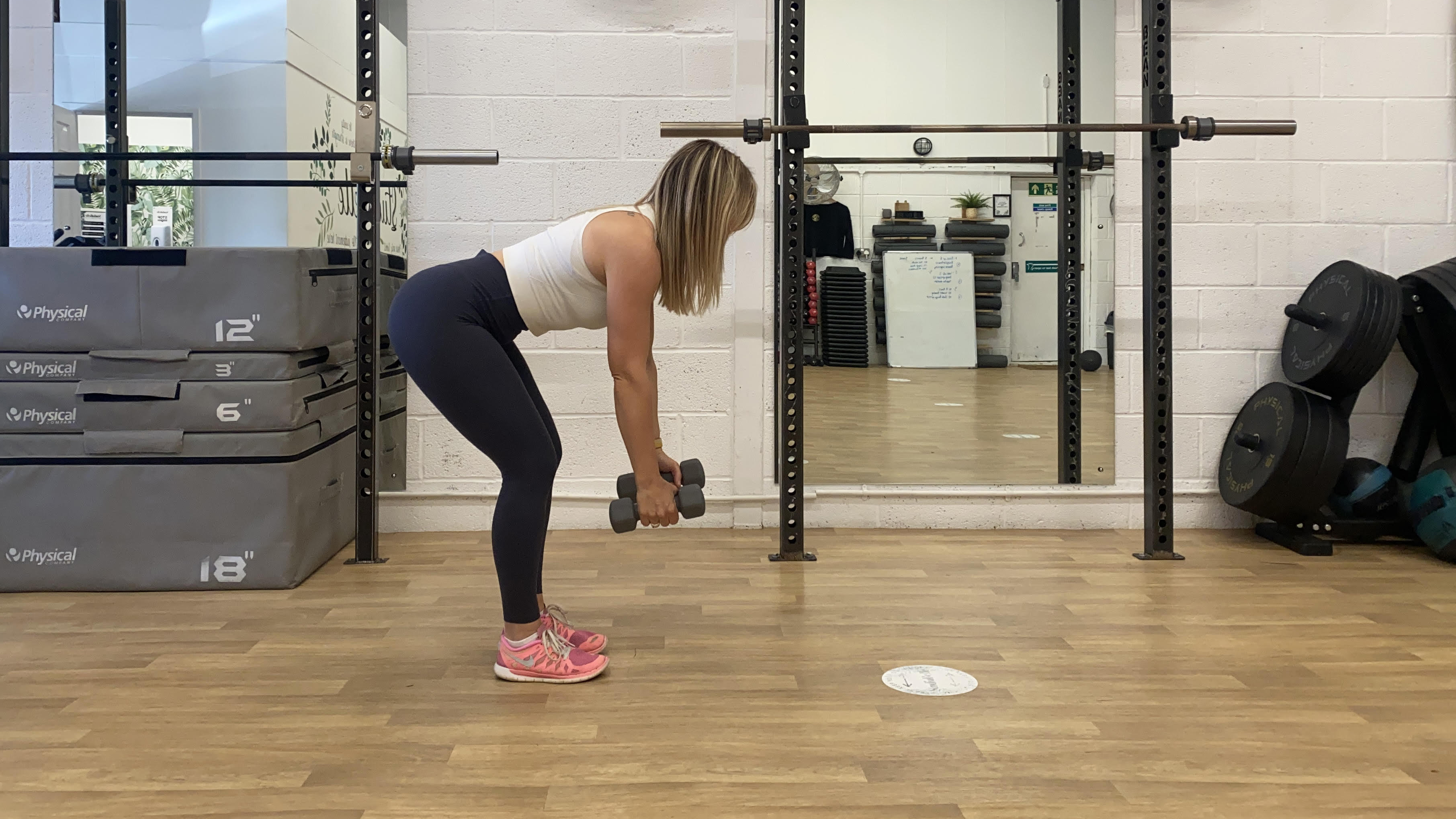
Dumbbell back exercises are a great way to strengthen muscles and prevent injury but also to counteract back pain.
Back pain is the sixth most costly condition in the US, according to a 2010 study by Georgetown University. Doing basic dumbbells back exercises can significantly improve the overall strength of the shoulders and your posterior chain – the muscles in the backside of the body, including the lower back, glutes, hamstrings and calf muscles. This will make you stronger and more able to do everyday-life activities.
The posterior chain is particularly important for overall health because these muscle groups contain much of the body's power – and help with balance and posture. Grab yourself a pair of free weights, the best adjustable dumbbells or the best resistance bands, and give this easy back-strengthening workout a try.
Warm up
Before any exercise, it’s important to do a warm-up to raise the heart rate and get the muscles ready – this also reduces the risk of injury. If you’re doing this workout in the gym, aim for five minutes at medium intensity on a cardio machine of your choice. If at home, try this quick and easy warm up:
10 x shoulder rolls
10 x arm circles
10 x hip flexors
10 x lunges (5 per leg)
10 x squats (5 per leg)
10 x high knees
10 x jumping jacks
10 x plank walkouts
Don’t forget to do a cool-down at the end, as it’s just as important as the warm-up and can help reduce the risk of muscle soreness post-workout. Opt for either five minutes on a cardio machine or five minutes of stretching.
(If you're interested in hypertrophy training, try a strength and conditioning coach's pick of the best exercises for shoulders.)
Get the world’s most fascinating discoveries delivered straight to your inbox.
Dumbbell shoulder press
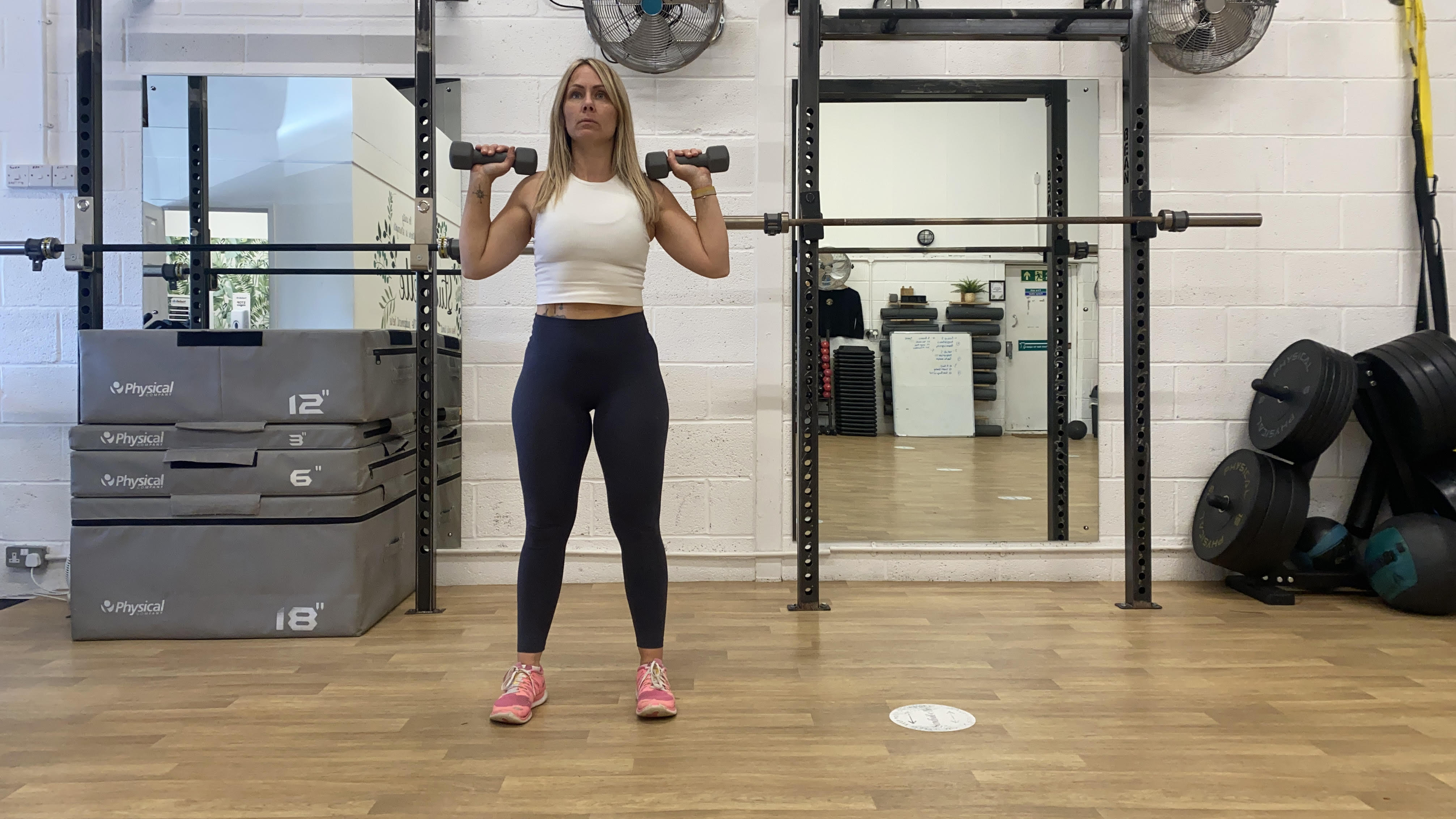
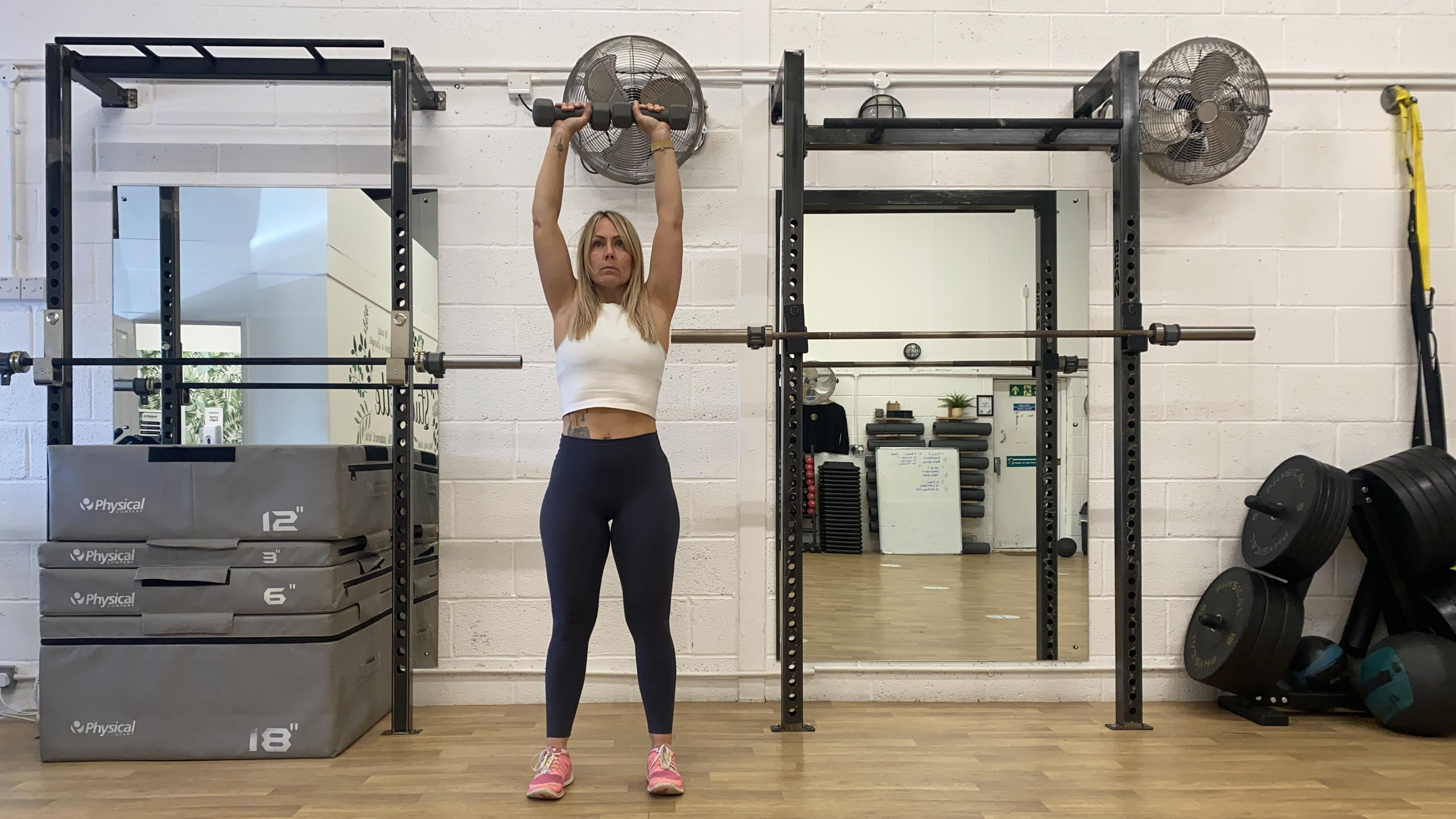
How to do it: Start from standing with a weight in each hand. Raise the dumbbells until they are just above your shoulders. Your hands should be directly above your elbows and your forearms straight (vertical).
With a straight back, push the weights up above your head. The dumbbells should meet at the top with a slight gap between them. Lower the weights slowly and with control until your hands are in line with your chin or to a 90-degree bend in your elbows, depending on your range of movement. Repeat for 10 reps.
Muscles worked: Upper back, shoulders (deltoids) traps (the big muscle at the base of the neck, across the shoulders and middle of the back, which helps you move your head, neck, arms, shoulder and torso and stabilizes the spine) and arms (triceps).
Bent over dumbbell row
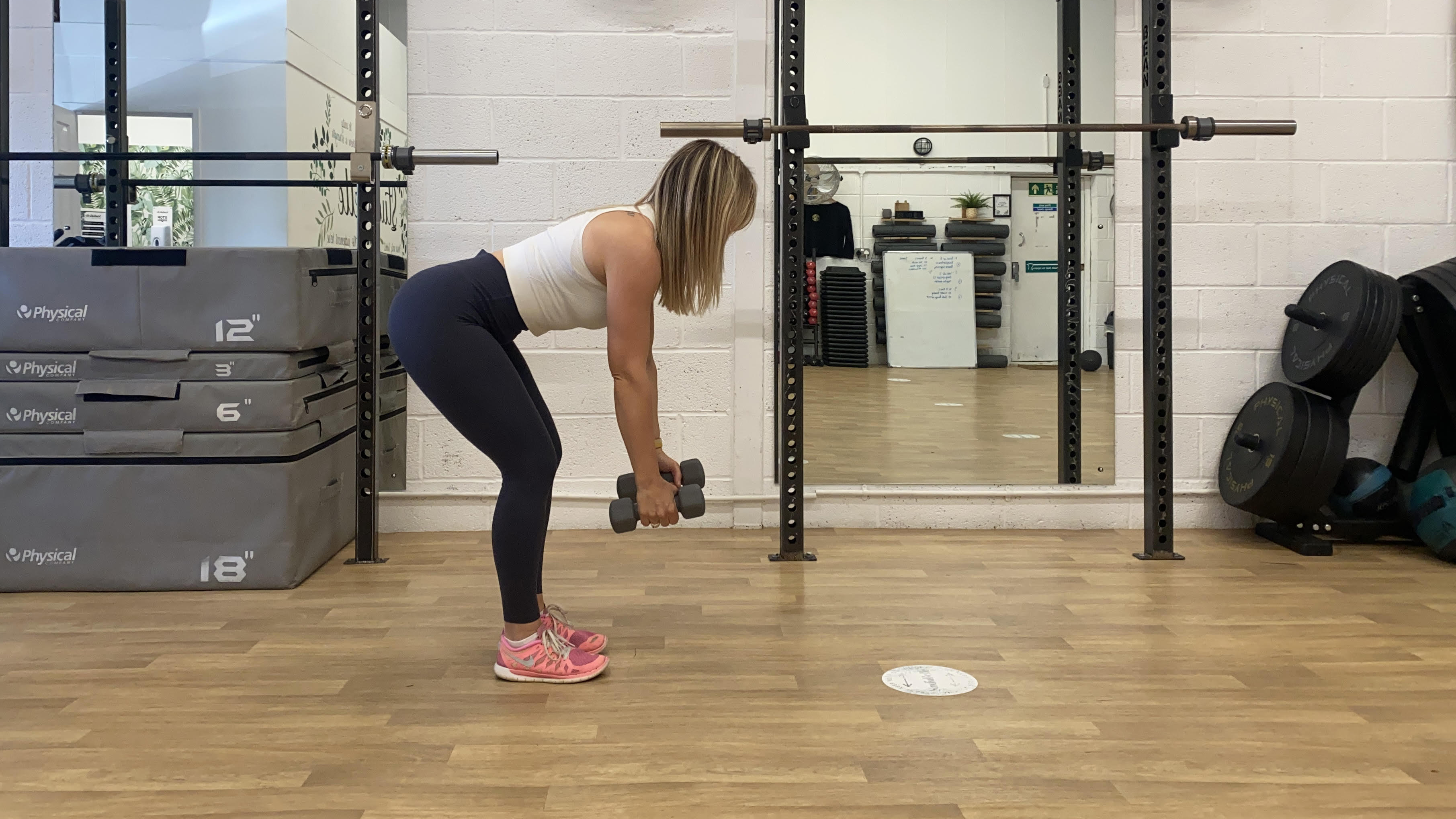
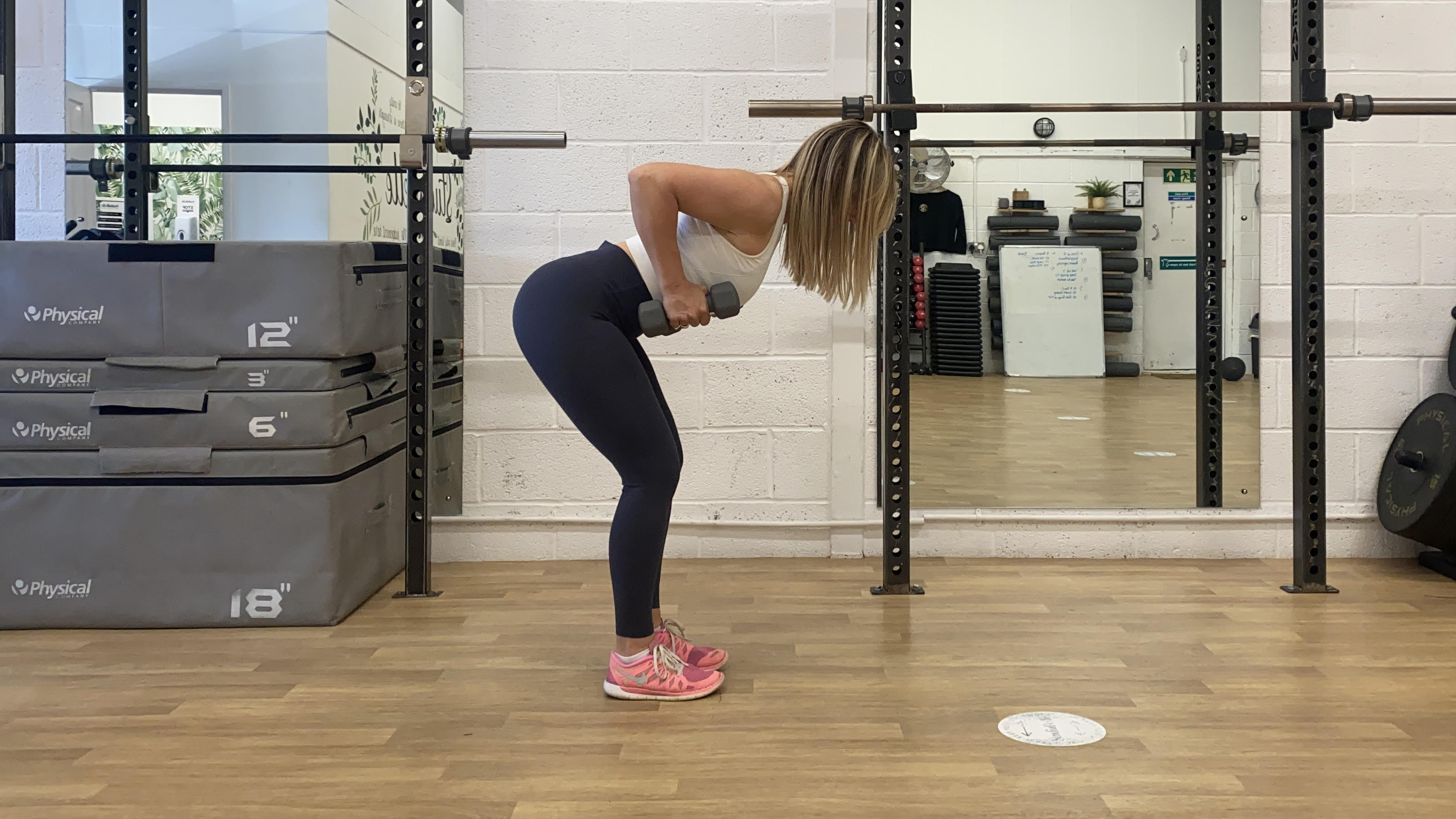
How to do it: Stand tall with a tight core and flat back. Hold the weights in each hand. Bend slightly at the knees as you push your hips back. Keep your chest and head up and your back straight. Your upper body should be almost parallel with the floor.
With your elbows at a 60-degree angle, bring the weights up towards your chest. Pause when your upper arm is parallel with the floor. Hold, then slowly return the weights to the starting point and repeat for 10 reps.
Muscles worked: Middle back, lats (the big V-shaped muscles that connect your arms to your vertebral column. They help protect and stabilize the spine while providing shoulder and back strength), upper back and lower traps (neck, shoulders, back) and biceps.
Dumbbell deadlift
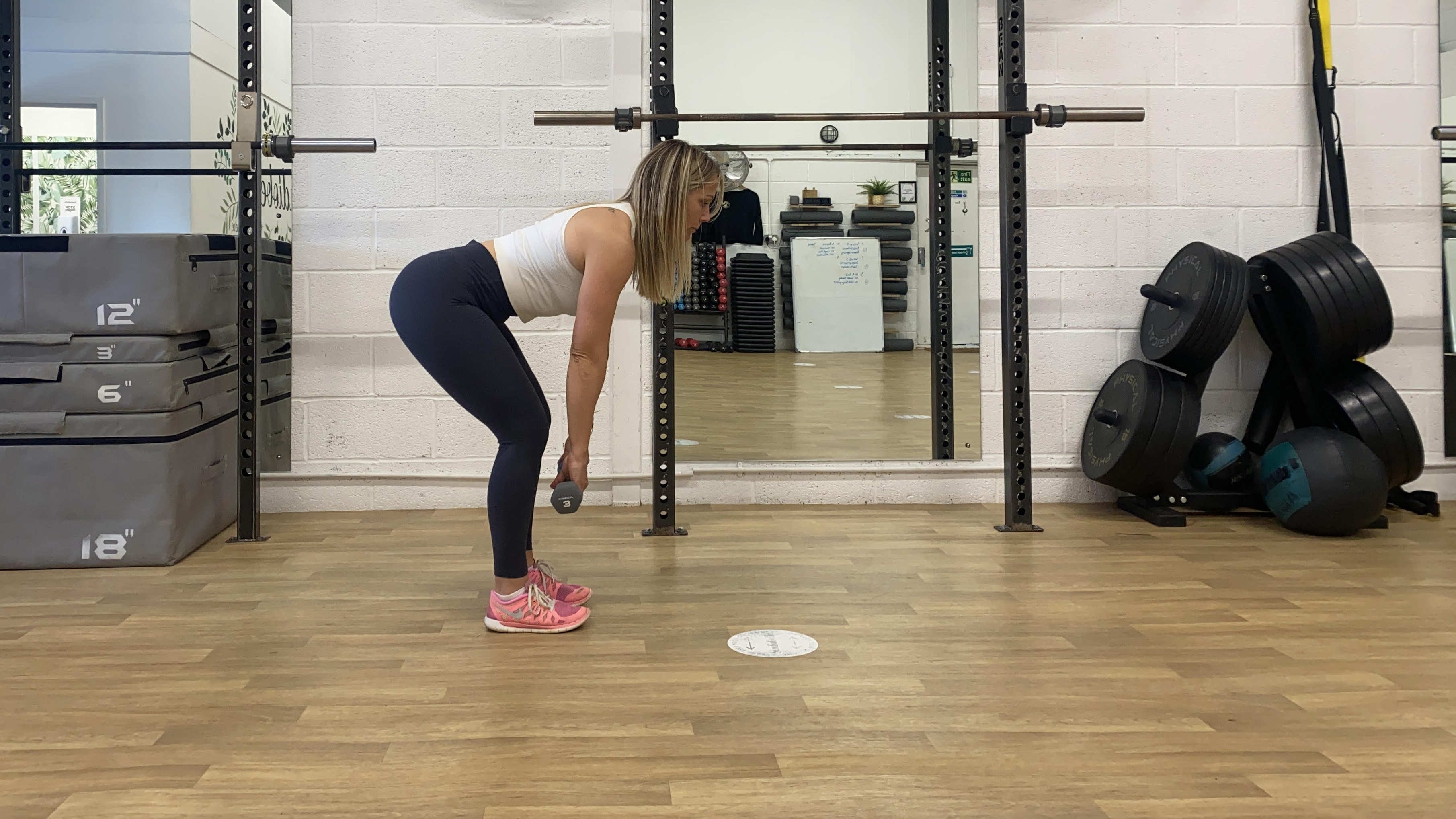
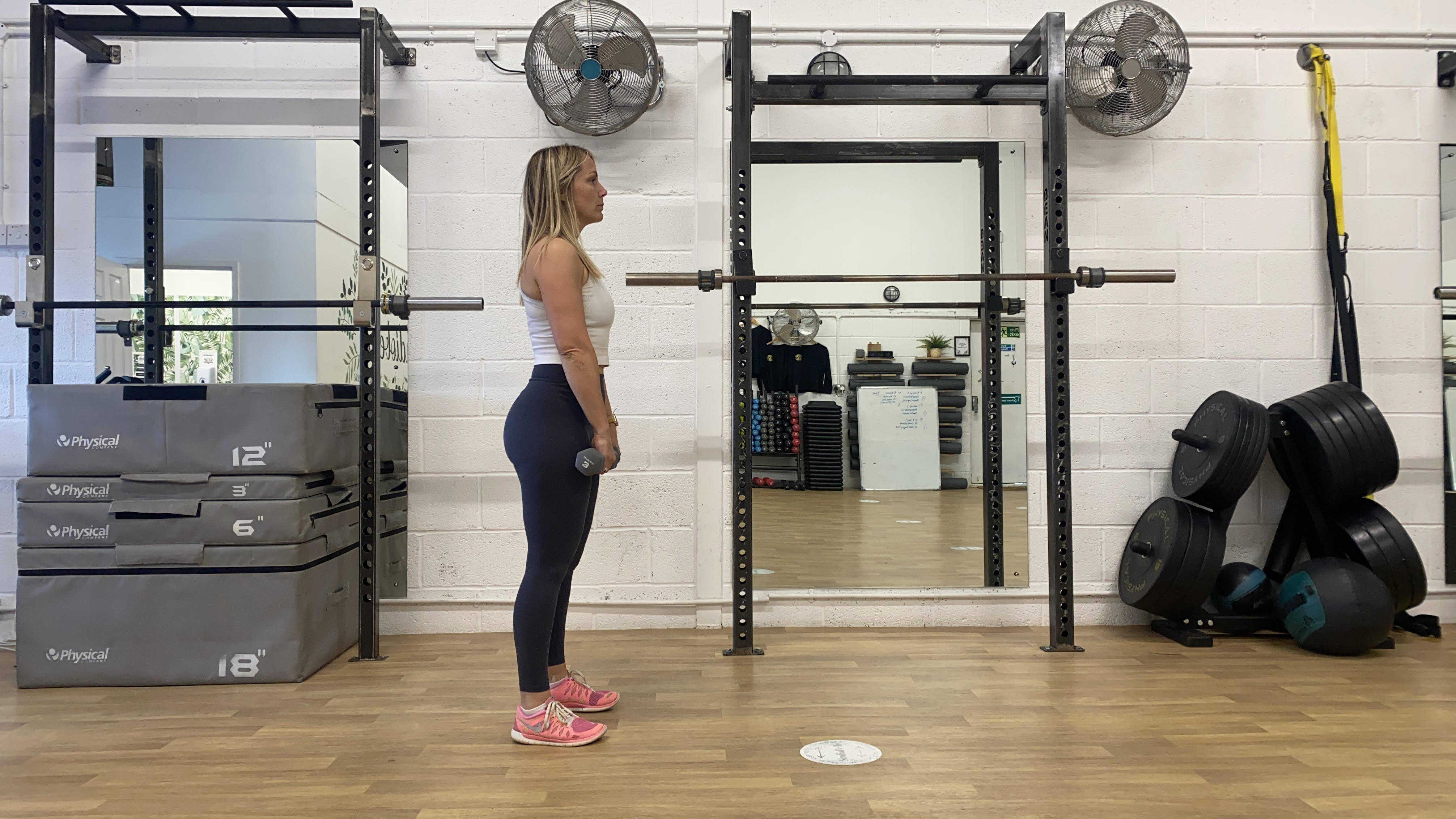
How to do it: Stand with feet shoulder-width apart and knees slightly bent. Pick up a dumbbell in each hand with an overhand grip and hold them in front of your thighs.
Bending at the hips and knees, lower your torso until it’s almost parallel with the floor, effectively rolling the weights down your legs like a rolling pin. Allow the arms to hang down in front of your knees and shins. Take care not to round the back as you complete this movement.
Hinging at the hips and with soft knees, squeeze your glutes (butt muscles) as you slowly stand up straight again, rolling the weights back up your legs. That’s one rep. Repeat 10 times.
Muscles worked: lower back, glutes, quadriceps (the large muscle group covering the front and sides of the thighs) and hamstrings.
Lateral raise
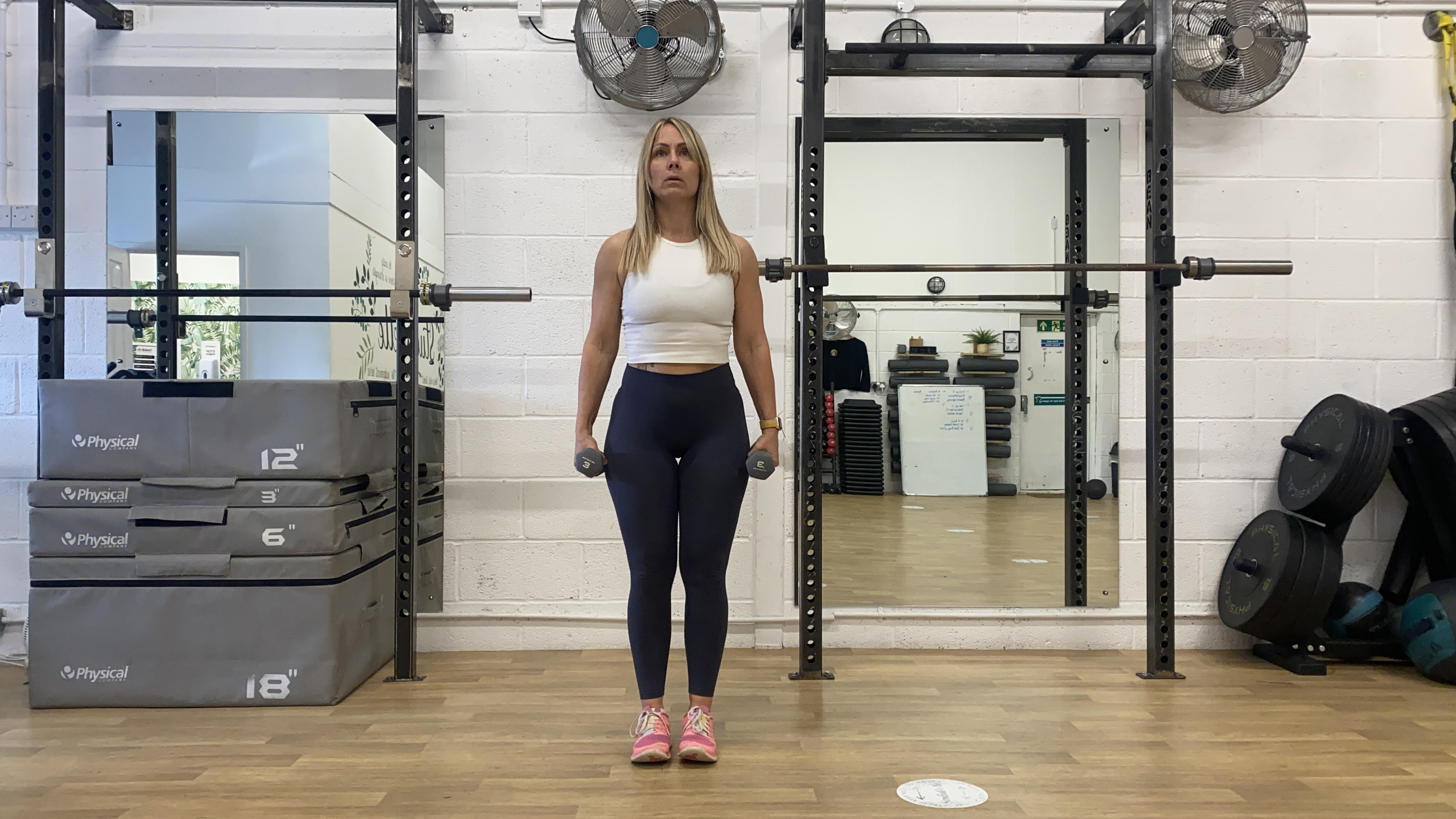
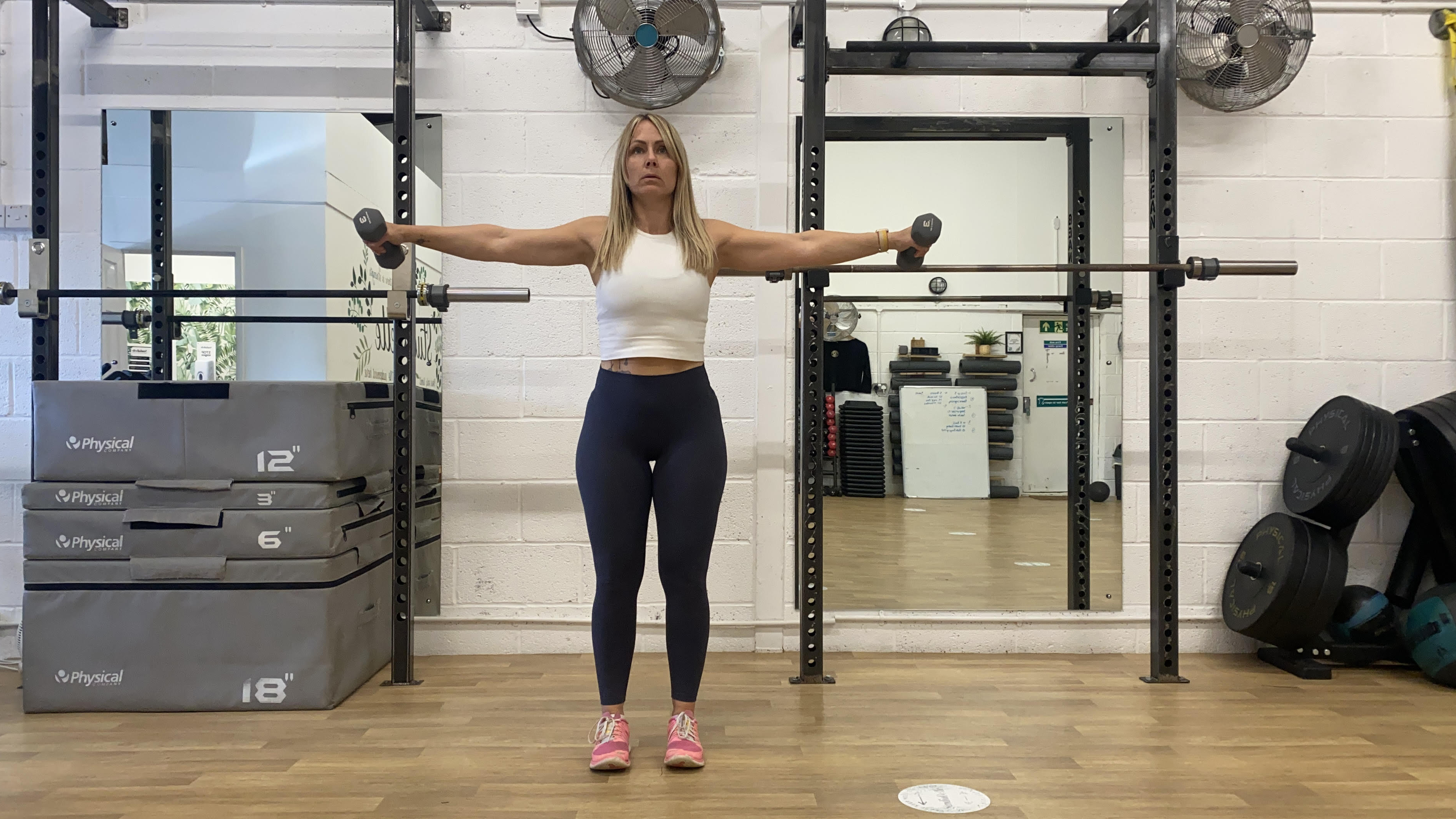
How to do it: Stand legs hip width apart with your back straight and a neutral spine. Hold a weight in each hand with an overhand grip.
Raise the dumbbells out to the side so that your body is making the shape of the letter T. At the top your hands should be flat and your palms should be facing the floor. Lower with control the weights back down to your sides. That’s one rep. Repeat 10 times.
Muscles worked: Shoulders (deltoids).
Front raise
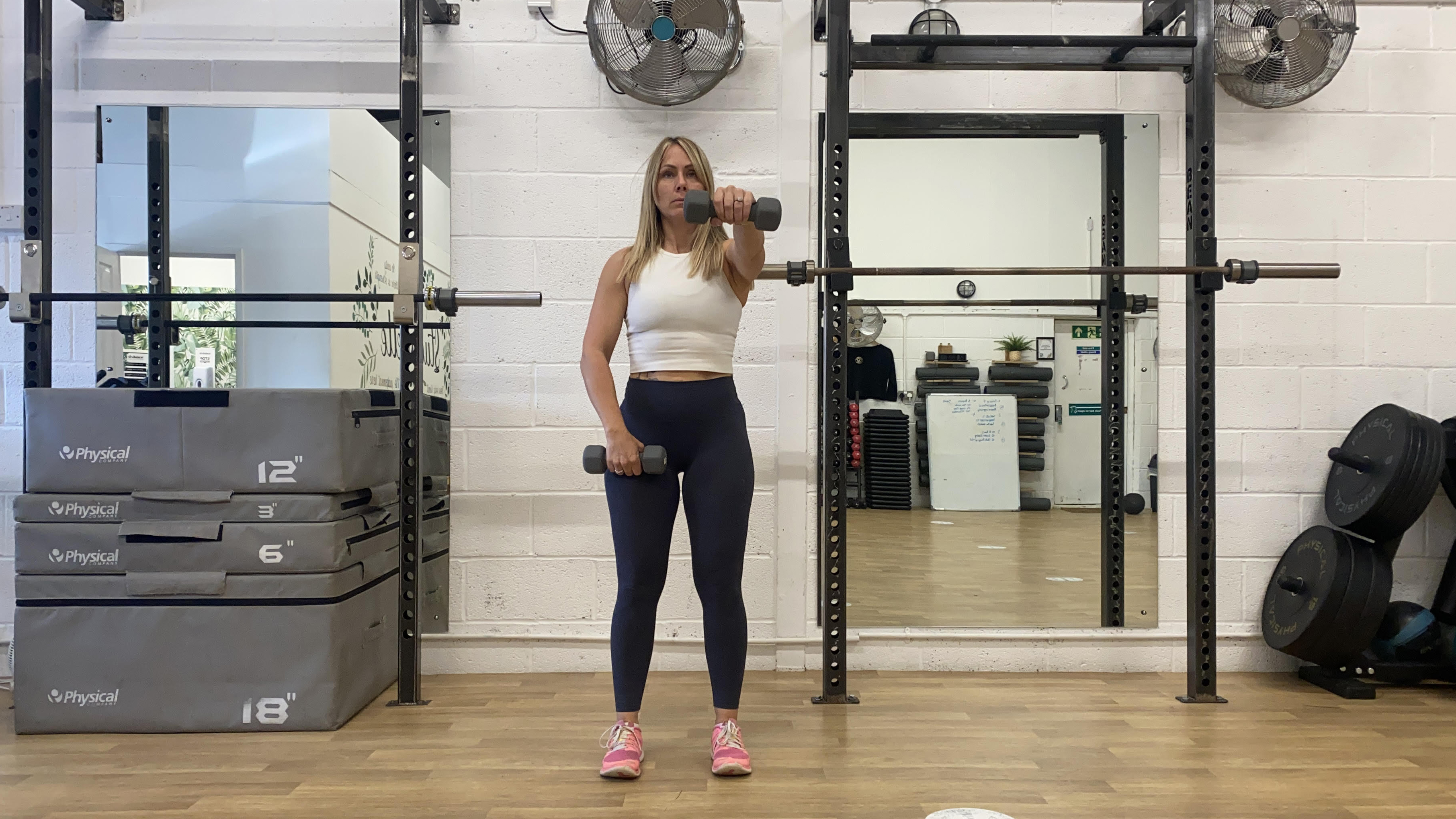
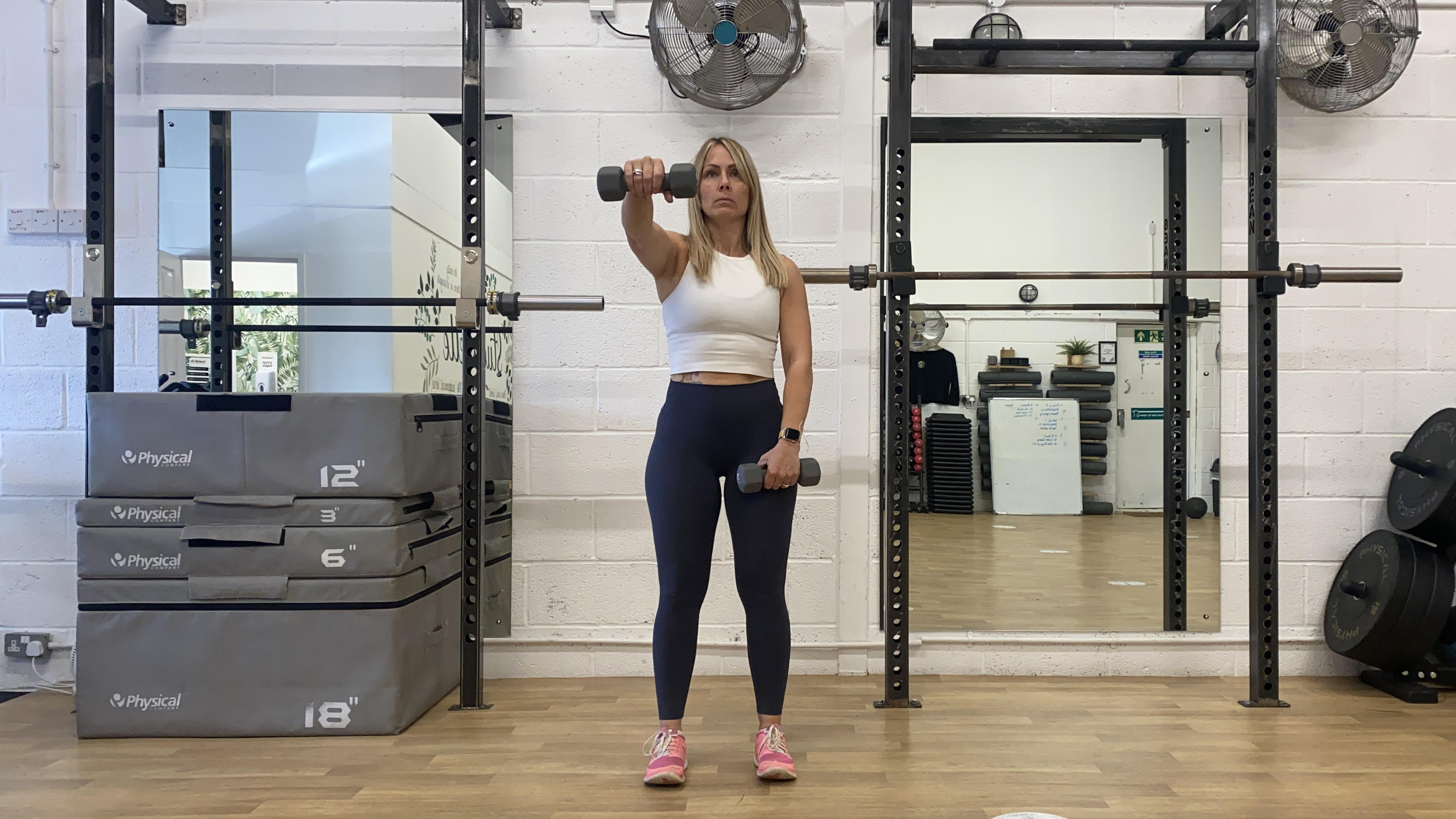
How to do it: Start with your back straight, legs about hip width apart and knees soft, and a dumbbell in each hand. As you exhale, raise the left weight out and upwards until your arm (with a slight bend in your elbow) is a little above parallel to the floor. Pause for one second.
Inhale and slowly lower the dumbbell to the start position. As you lower the left weight, begin to lift the right weight, duplicating the movement. When you’ve returned to the start position, that is one repetition. Repeat this move five times per arm.
Muscles worked: Shoulders (anterior deltoid), upper chest muscles (pectorals).
Renegade row
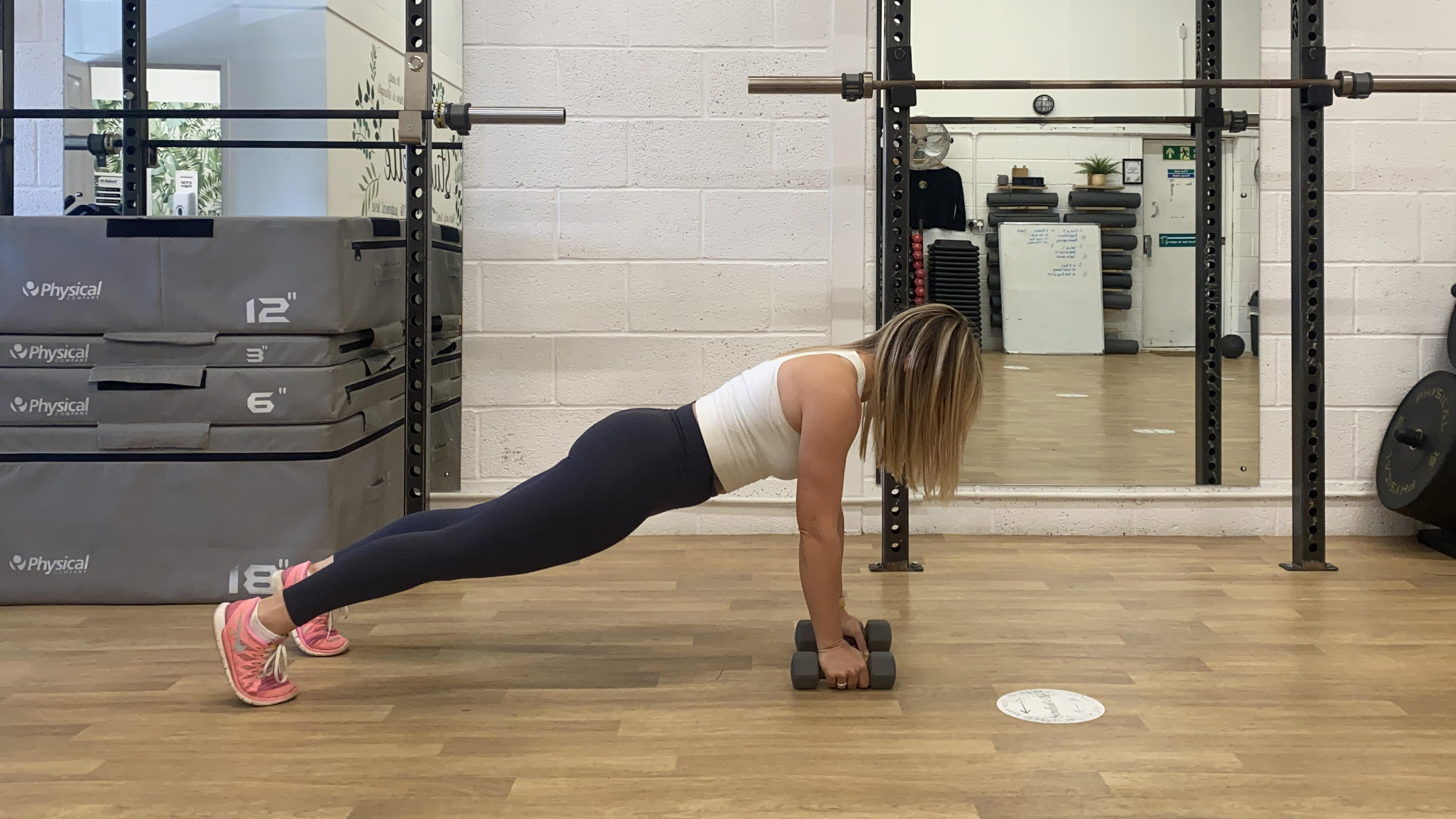
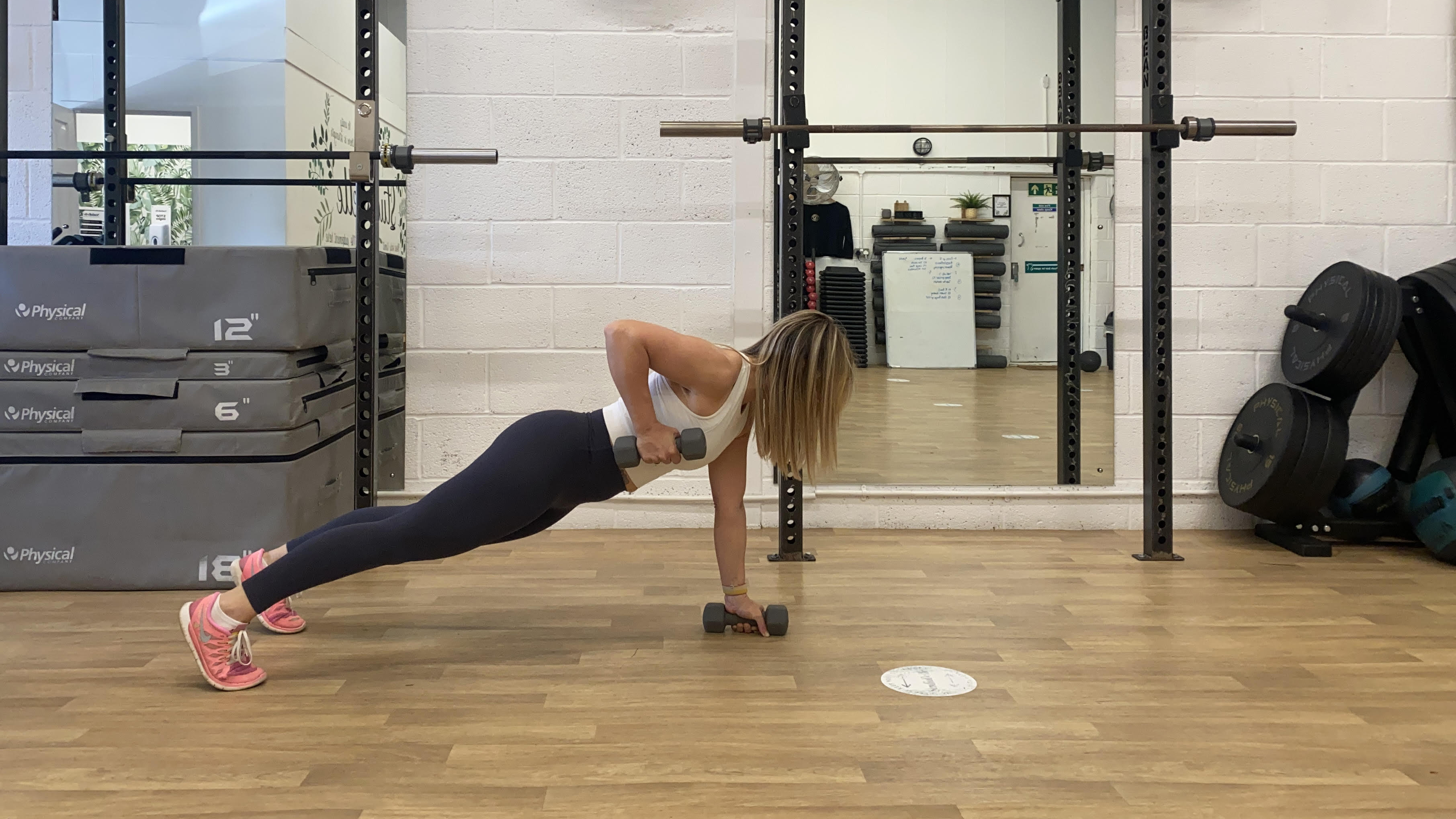
How to do it: Start in a push up position with a dumbbell in each hand. Position your arms so that your shoulders are stacked directly over your wrists. Your feet should be shoulder-width apart.
Engage your core, then, keeping the dumbbell close to your body, row the weight up towards your rib cage until your elbow is pointing upwards – imagine you are pulling the dumbbell back and putting it in your pocket.
Slowly and with control lower it back down to the ground. Swap arms and repeat the movement, aiming for 10 reps in total (5 on each side).
Muscles worked: Back (rhomboids) core muscles including the obliques and the arms (triceps).

Maddy Biddulph is a freelance health and fitness journalist with over 26 years of experience working for consumer media in the US and UK. As a Level 3 personal trainer and weight loss advisor she is used to trying out and reviewing the latest health and fitness products. At Maddy Biddulph Personal Training, she runs one-to-one and small group sessions, as well as group exercise classes. She specializes in mobility work with seniors and runs regular chair workouts in her hometown of Oxford.


